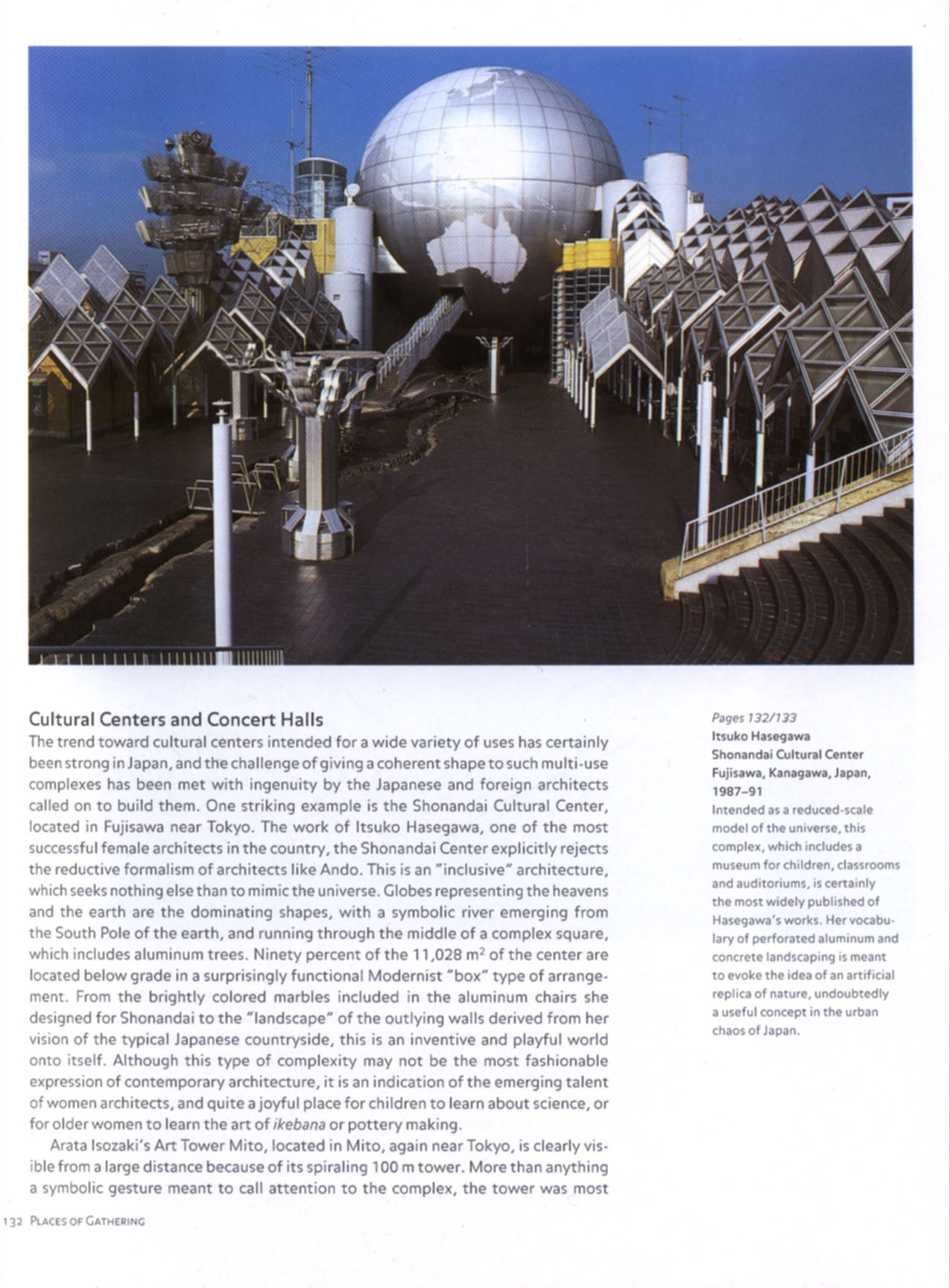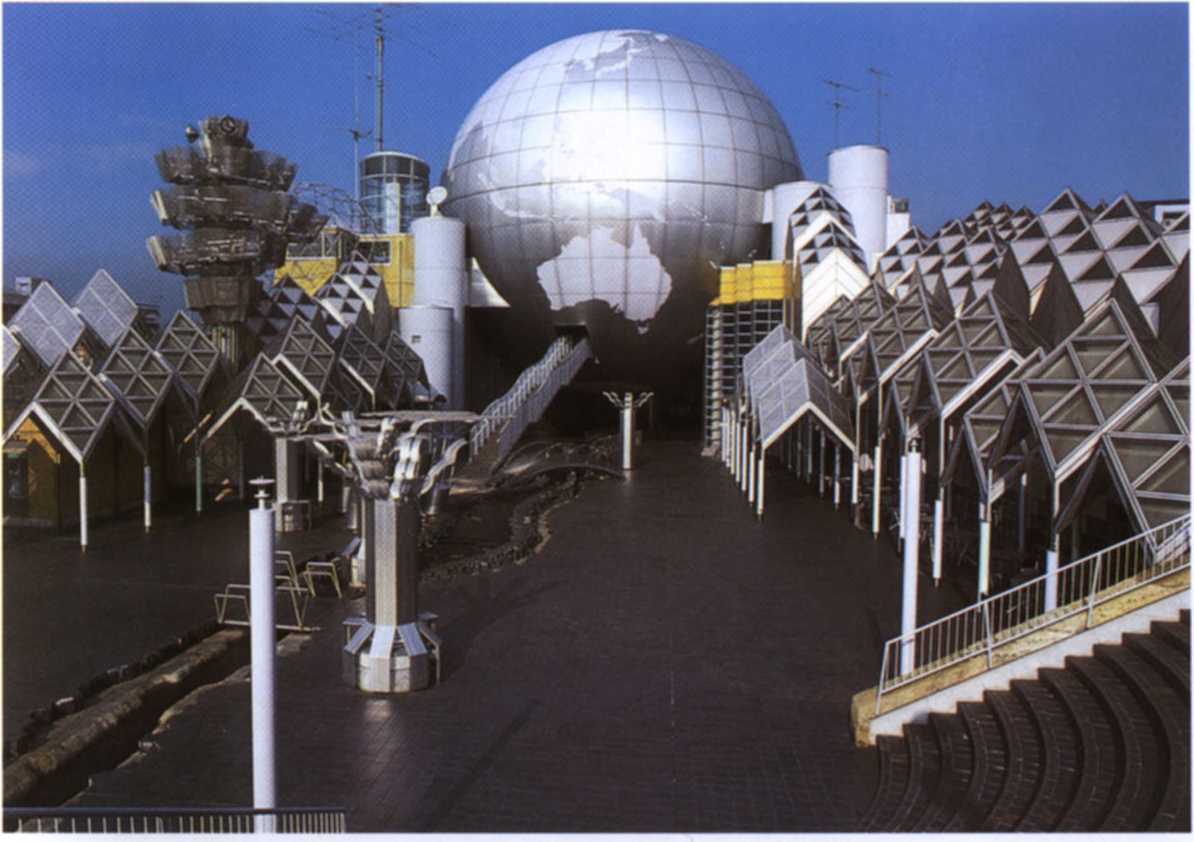New Forms Taschen 123


Cultural Centers and Concert Halls
The trend toward cultural centers intended for a wide variety of uses has certainly been strong in Japan, and the challenge of giving a coherent shape to such multi-use complexes has been met with ingenuity by the Japanese and foreign architects called on to build them. One striking example is the Shonandai Cultural Center, located in Fujisawa near Tokyo. The work of Itsuko Hasegawa, one of the most successful female architects in the country, the Shonandai Center explicitly rejects the reductive formalism of architects like Ando. This is an "inclusń/e” architecture, which seeks nothing else than to mimie the universe. Clobes representing the heavens and the earth are the dominating shapes, with a symbolic river emerging from the South Pole of the earth, and running through the middle of a complex square, which includes aluminum trees. Ninety percent of the 11,028 m? of the center are located belowgrade in a surprisingly functional Modernist "box" type of arrange-ment. From the brightly colored marbles included in the aluminum chairs she designed for Shonandai to the "landscape" of the outlying walls derived from her vision of the typical Japanese countryside, this is an inventive and playful world onto itself. Although this type of complexity may not be the most fashionable expression of contemporary architecture, it is an indication of the emerging talent of women architects, and quite a joyful place for children to learn about science, or for older women to learn the art of ikebana or pottery making.
Arata lsozaki's Art Tower Mito, located in Mito, again near Tokyo, is clearly vis-ible from a large distance because of its spiraling 100 m tower. Morę than anything a symbolic gesture meant to cali attention to the complex, the tower was most
Ptgct 132/133 Itsuko Hasegawa Shonandai Cultural Center Fujisawa, Kanagawa, Japan. 1987-91
Intended as a reduced-scale model of the umverse, this complex, which includes a museum for children, classrooms and auditoriums. is certainly the most widely published of Hasegawa's works. Her vocabu-lary of perforated aluminum and concrete landscaping is meant to cvoke the idea of an artificial replica of naturę, undoubtedly a useful concept in the urban chaos of Japan.
132 Placcs or Gatmering
Wyszukiwarka
Podobne podstrony:
New Forms Taschen 097 I M . Pei Rock and Roli Hall of Famę Cleveland, Ohio, 1993-95 With its py
19818 New Forms Taschen 097 I M . Pei Rock and Roli Hall of Famę Cleveland, Ohio, 1993-95 With
27702 New Forms Taschen 130 Frank O. Gehry Disney Concert Hall Los Angeles, California, 1988- (
78489 New Forms Taschen 148 Architect/Artists and Artist/Architects Frank O. Gehry s thoughts about
New Forms Taschen 210 links between and the closeness of art and science. This theoretical input is
New Forms Taschen 156 Pages 166/167 Schweitzer BIM The Monument JoshuaTree, California. 1987-90
New Forms Taschen 190 Samitaur in Culver City challenges the use of urban space in a slightly differ
więcej podobnych podstron